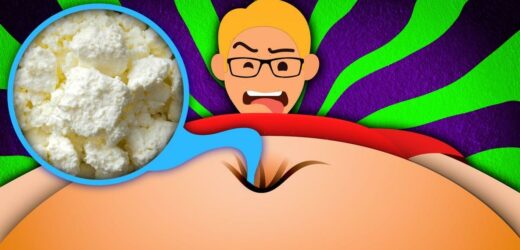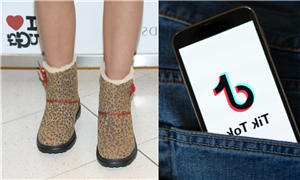- Belly buttons are most people’s first scars, which form when doctors cut their umbilical cord after birth.
- Most innies are full of dozens of kinds of bacteria, fungi, and lint — especially if they’re on a hairy belly.
- If a navel gets infected, it might also have a foul-smelling, cheese-like liquid inside.
- Speaking of cheese, a biologist teamed up with an artist in 2013 to create cheese using belly button bacteria.
- See more stories on Insider’s business page.
Following is a transcript of the video.
Narrator: Near the turn of this century, scientist Georg Steinhauser had a problem. He was fascinated by the question: Why do some belly buttons collect more lint than others? But no one knew the answer. So for three years he collected his own belly-button lint to find out. And after interviewing friends and analyzing 503 of his own samples, Steinhauser discovered the culprit: stomach hair. It scratches off tiny T-shirt fibers and directs them towards the belly button. So that might be one mystery solved, but lint isn’t the only thing inside these bizarre human crevices.
Your belly button is a scar, your very first one. It forms when a doctor snips your umbilical cord, and, depending on how it heals, you could have an outie or, more likely, an innie. And innies are ripe for colonization, not only by lint, hair, and dead skin cells, but also by bacteria.
In one study, 60 volunteers swabbed their belly buttons. Researchers then analyzed the samples and found more than 2,300 kinds of bacteria. That’s an average of 67 different kinds per belly button. Now, many of those microbes aren’t unique to belly buttons, like staphylococcus, which can lead to staph infections. It shows up in noses, throats, hair, and, yes, even belly buttons.
But the researchers also discovered other bacteria never before seen on human skin, like marimonas, which scientists had previously only seen in the ocean. And they even found bacteria that chefs use to make cheese, and, yes, somebody did exactly that. She grew the belly-button bacteria in a petri dish and then added it to milk. Sure enough, after a few hours, the milk curdled into cheese. Belly-button Brie, anyone?
Now, for the most part, the microbes in your navel are harmless. In fact, recent studies suggest that bacteria on your body may strengthen your skin’s defense system, but if you never clean your belly button, they’ll grow unencumbered, and that can be a problem. The best-case scenario is that your belly button will start to smell. When common navel microbes, like corynebacterium, build up, they emit pungent odors, similar to body odor. But the worst case is that your navel will get infected, not just by staph but also by microbes that cause strep throat and yeast infections. That’s right, you can get a yeast infection in your belly button, which can lead to itching and redness, and cause a clear or off-white discharge to leak out, which almost looks like cottage cheese. So how does that cheese sound now?
While microbes colonize your belly button from the outside, there could also be an invader from the inside. We’re talking about belly-button hernias. In the womb, the umbilical cord runs from your mom to you, passing through an opening in your abdominal muscles. Normally that opening seals up after you’re born, but, in some cases, it never really closes all the way. This can allow internal organs to slip through, creating a bulge behind your belly button. Navel hernias affect as many as one in five newborns in the US, but they’re rarely life-threatening, and are far less common in adults. In fact, as long as you rinse your belly button with warm, soapy water once a week, the worst you’ll have to put up with is a little fluff.
EDITOR’S NOTE: This video was originally published in July 2019.
Source: Read Full Article


